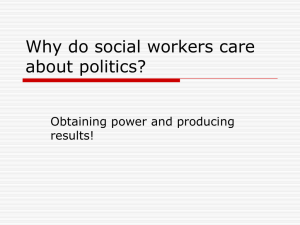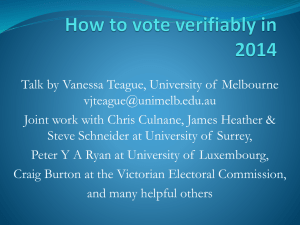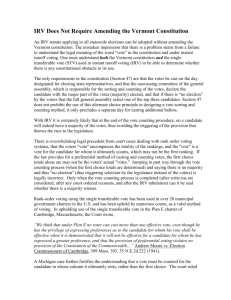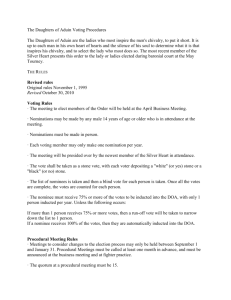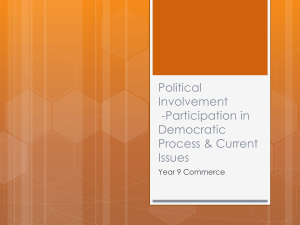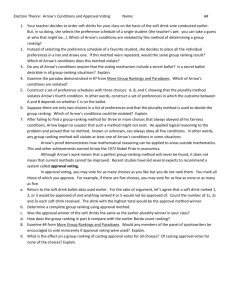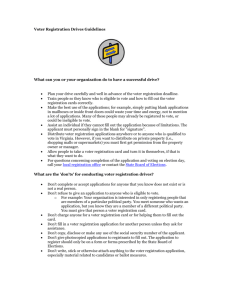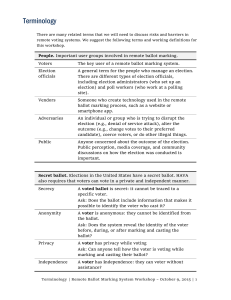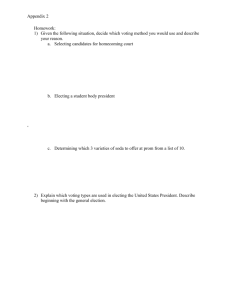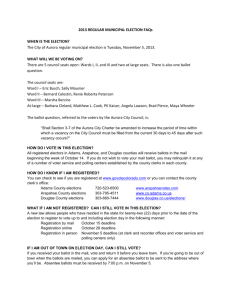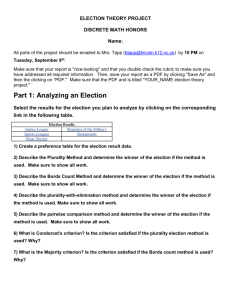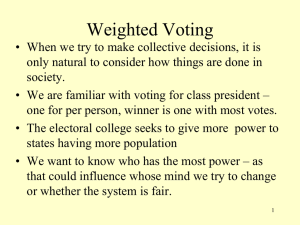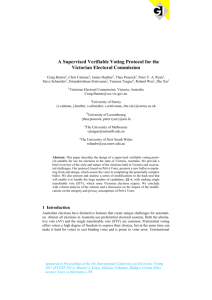Online Voting
advertisement
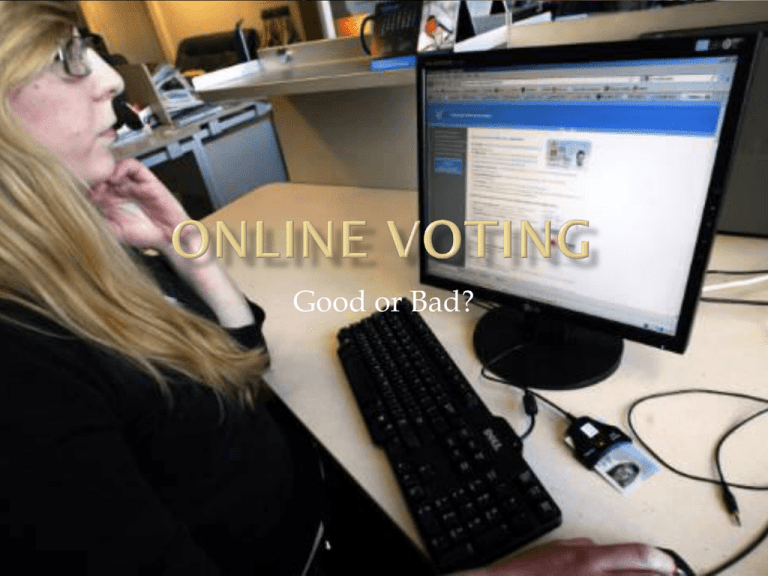
Good or Bad? One of the closest contests in US history Florida was the pivotal state Neither Democrat Al Gore nor Republican George W. Bush had a majority of votes in the Electorial College. After a Florida recount the vote was: Bush: 2,912,790 Gore: 2,912,253 Difference of 437 votes Hanging chad Butterfly ballot Stylus used to punch a hole in the ballot next to the candidate’s name Sometimes the stylus didn’t punch the hole cleanly, leaving a tiny piece of the card hanging on the ballot This was referred to as the “hanging chad” The automatic vote tabulators typically would not count the ballots with hanging chad A manual recount had to identify ballots with hanging chad that should have been counted Votes may have mistakenly punched a hole for Reform Party candidate Pat Buchanan instead of for Democratic candidate Al Gore This confusion may have cost Al Gore the election Many states replaced paper-based systems with direct recording electronic voting machines. These systems were not connected to a network Others have suggested that voting be conducted via the Internet Used in 2000 Alaska Republican Presidential preference poll Used in 2000 Arizona Democratic Presidential primary United Kingdom has used on-line voting in local elections since 2001. Estonia is first country to vote online in local and national elections Let’s weigh the benefits vs. risks of online voting in a presidential election People who can’t get to the polls could vote from home Votes could be counted more quickly No issues with hanging chad or erasures Cost less Eliminate risk of having physical votes tampered with Over voting for too many candidates could easily be prevented Gives an unfair advantage to those who are financially better off. What about the Digital Divide? The system that authenticates the the voter also records the ballot. Some fear loss of privacy. Chance of vote selling is increased since the person selling their vote can now be monitored. A server hosing an election would be an obvious target of a DDoS attack. Security depends upon the security of the home computers Virus could change a person’s vote Backdoor Trojan could allow a person’s vote to be observed by an outsider Attacker could fool voter into connecting to a phony site to vote and steal the voter’s credentials Utilitarian analysis adds up the positive and negative outcomes to determine whether online voting is a good action or not Consider the possible outcome, the value of the outcome on each affected person, and the number of people affected One benefit – people would not have to travel to polling place and wait in line. Estimate that about one hour is spent in voting Average salary in US is $18 per hour About 50% of adult Americans vote Time savings would be worth about $9 for every adult DDoS may prevent voters from casting their votes There is potential for great harm if will of voters is not followed This potential harm is reduced because a) probability of DDoS attack is low, b) probability of DDoS attack being successful is low, and c) probability of a DDoS attack changing the outcome of an election is low. These probabilities may vary considerably from one expert to another, so this evaluation can tip one way or the other Focus is on the importance in the will of each voter being reflected in that voter’s ballot Integrity of each ballot is paramount Eliminating paper records in order to save time and money or boosting voter turnout is wrong from this perspective A web-based system would make it much easier for hacker to taint the process on a wide scale A web-based system would have no paper record to verify the intent of the voter Online elections have already been tampered with Any election system that relies on the security of personal computers managed by ordinary citizens will be vulnerable to fraud Lots of interest on Internet for OnLine Voting. See http://eballot.votenet.com/








